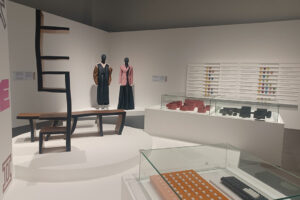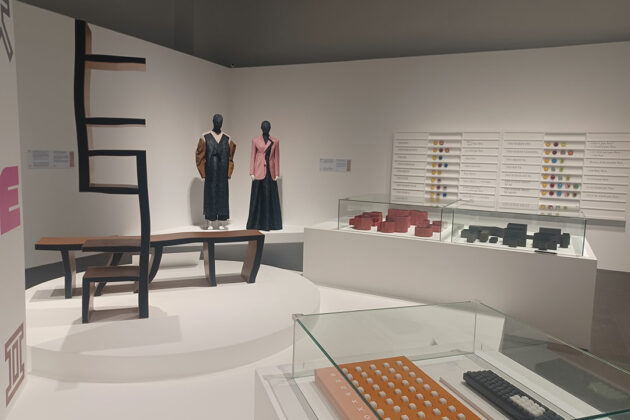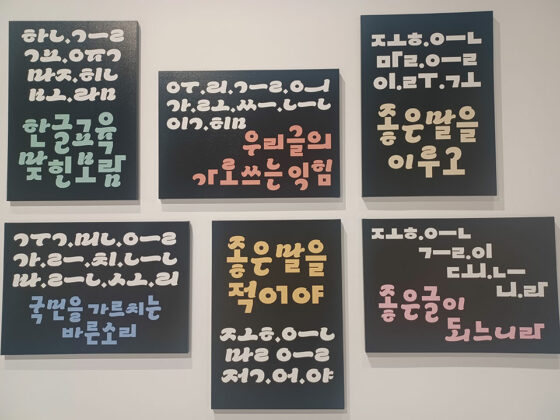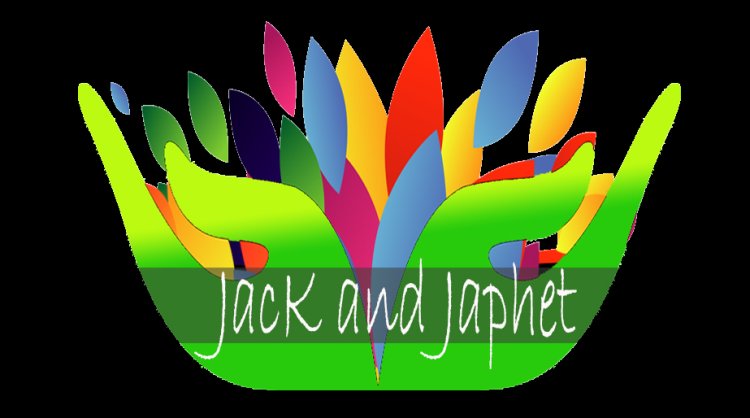Design appreciation: Hangeul reinterpreted in the modern era
AT THE HEART of Taguig stands a curious exhibit that presents modern-day interpretations of a very old language system. The Korean Cultural Center of the Philippines (KCC) has welcomed the National Hangeul Museum’s timeless tribute to Hangeul, the Korean language alphabet. By showcasing its design in various art forms, Hangeul’s adaptability in conveying ideas in […]

AT THE HEART of Taguig stands a curious exhibit that presents modern-day interpretations of a very old language system.
The Korean Cultural Center of the Philippines (KCC) has welcomed the National Hangeul Museum’s timeless tribute to Hangeul, the Korean language alphabet. By showcasing its design in various art forms, Hangeul’s adaptability in conveying ideas in modern times is highlighted, despite being created way back in 1443.
The items in the exhibit, Hangeul Design Project: Reinterpreting Hangeul in the Modern Era, are of different mediums, from traditional calligraphy displays to contemporary art, fashion, and furniture mimicking the alphabet’s style.
“Language is constantly changing, sometimes becoming something new, sometimes disappearing. It can be called an intangible cultural heritage,” National Hangeul Museum of Korea curator Kim Eun-jae said at the exhibit’s launch on Sept. 5.
Inside the hall on the 5th level of KCC, visitors are able to see how the language system can be integrated into other objects and art forms. The exhibit offers “an engaging and accessible perspective on the Korean alphabet,” according to Ms. Kim.
Designed by King Sejong of Joseon in the 15th century, Hangeul utilizes a simple form to convey the sound of each letter within the parameters of a square. Each letter differs in sound depending on their change in location.
Some of the objects in the exhibit are 3D-printed works, furniture, and hanbok (traditional clothing) following the figurative characteristics of Hangeul.
“Its main visual feature is its use within a square frame. Various combinations can be created within, which is why it is highly efficient when used in visual and digital media,” Ms. Kim said.
On the walls are Hangeul typography, some stylized and some placed in contrast with other languages. A notable display is the video projection of words from an old novel, animated to move as if being written onscreen.
Ms. Kim noted that, from eight basic letters, Hangeul is able to expand to 28 letters based on form and location within the square frame format. Further nuances can transform these consonant and vowel sounds to include hundreds more letters.
“King Sejong may have been a king, but I also want to express his mastery of design,” she said.
In addition to the exhibit, KCC will be organizing a series of performances and workshops to enhance the experience, including a calligraphy workshop series to begin in October. More details will be posted on KCC’s social media.
Hangeul Design Project: Reinterpreting Hangeul in the Modern Era runs until Feb. 28, 2025 at the Korean Cultural Center of the Philippines in Bayani Road, Taguig City. The exhibit is free and open to the public. — Brontë H. Lacsamana
















